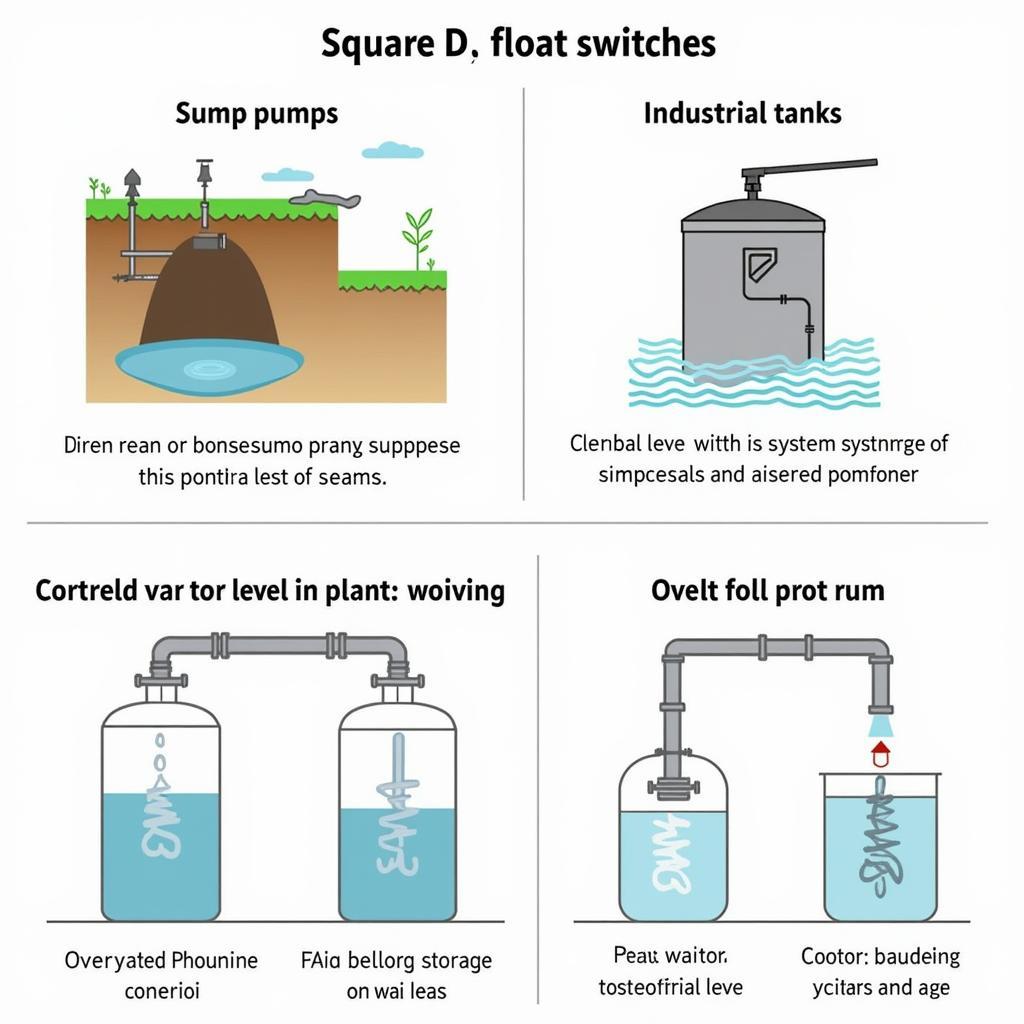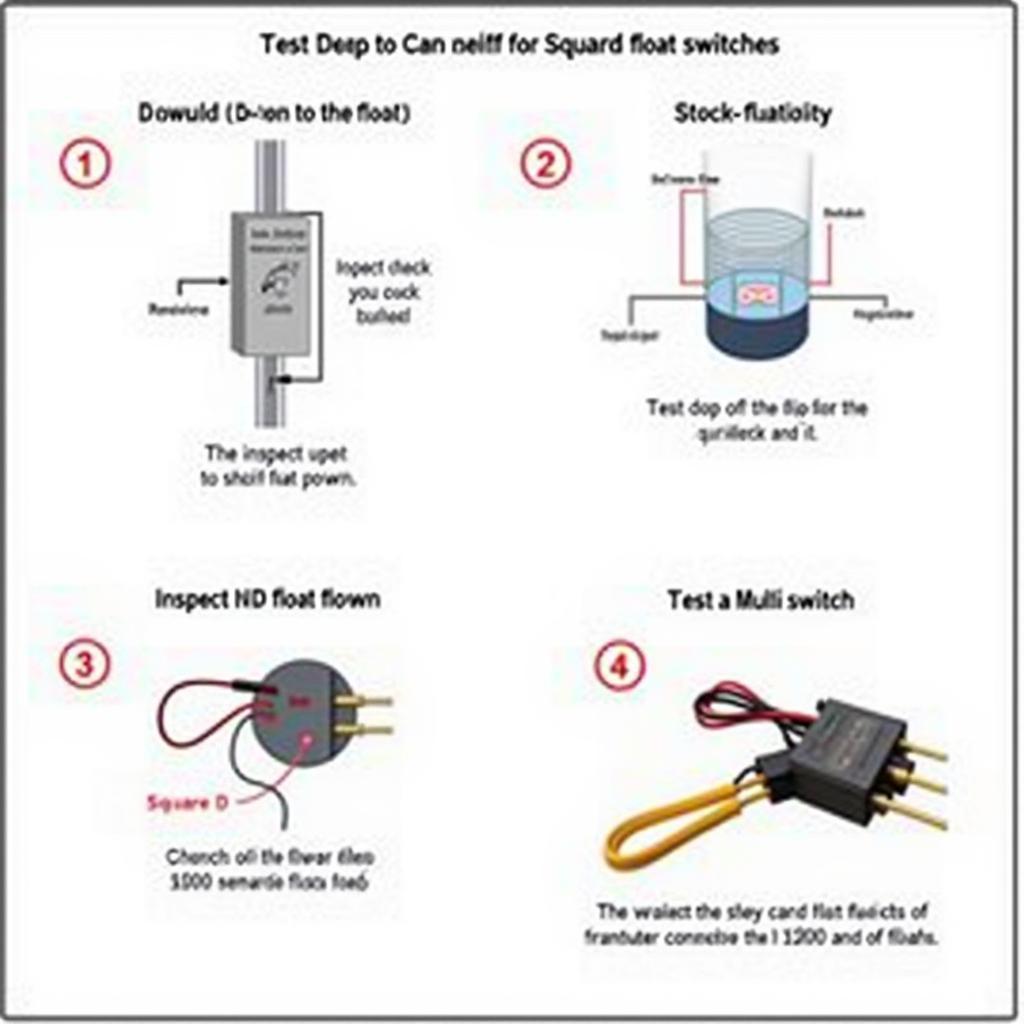Understanding Square D Float Switches
January 3, 2025Square D Float Switches are essential components in liquid level control systems, automatically activating or deactivating pumps and other devices based on the liquid level within a tank or reservoir. These versatile switches are widely used in various applications, from residential sump pumps to complex industrial processes. This article delves into the workings, types, applications, and benefits of Square D float switches.
Different Types of Square D Float Switches
Square D offers a range of float switches designed to meet diverse needs. Understanding these different types is crucial for selecting the right switch for your specific application.
Tethered Float Switches
Tethered float switches, also known as cable-suspended float switches, are a common type, employing a float attached to a cable. As the liquid level rises or falls, the float moves, activating or deactivating the switch. These are particularly suitable for larger tanks or reservoirs where point-level control is needed.
Vertical Float Switches
Vertical float switches are designed for narrow spaces and are mounted vertically. The float moves up and down with the liquid level, triggering the switch at pre-determined points. These are often found in sump pumps and smaller tanks.
Horizontal Float Switches
Horizontal float switches are mounted horizontally, typically at the top or side of a tank. They are activated when the float reaches a certain horizontal level. This type is often used in applications requiring precise level control.
How Square D Float Switches Work
The fundamental operating principle of a Square D float switch is based on buoyancy. The float, containing air, rises and falls with the liquid level. Inside the float switch housing is a mechanism, typically a mercury switch or a micro-switch, that is activated by the float’s movement. When the liquid reaches a specific level, the float triggers the switch, completing or interrupting an electrical circuit to control a connected device.
Choosing the Right Float Switch
Selecting the correct Square D float switch depends on several factors, including the type of liquid being monitored, the tank’s size and shape, the required level control accuracy, and the operating environment. Considering these factors will ensure optimal performance and reliability.
 Applications of Square D Float Switches
Applications of Square D Float Switches
Benefits of Using Square D Float Switches
Square D float switches offer numerous advantages, making them a popular choice for liquid level control:
- Reliability: Known for their robust construction and high-quality materials, Square D float switches provide reliable and consistent performance, even in demanding environments.
- Durability: Built to withstand harsh conditions, including corrosive liquids and temperature fluctuations, they offer long-lasting service life, reducing maintenance and replacement costs.
- Easy Installation: Designed for simple installation and setup, they save time and effort, making them ideal for various applications.
- Versatility: Available in various types and configurations, they cater to a wide range of liquid level control needs.
- Safety: By automating liquid level control, they enhance safety by preventing overflows, dry runs, and other potential hazards.
“Square D float switches are the industry standard for reliable liquid level control,” says John Smith, Senior Automation Engineer at Acme Industries. “Their durability and versatility make them a go-to solution for various applications.”
Troubleshooting Common Issues
Occasionally, float switches might malfunction. Understanding common issues and their solutions can save time and resources.
- Stuck Float: A stuck float can lead to inaccurate readings. Check for debris or obstructions and clean the float and surrounding area.
- Faulty Wiring: Inspect the wiring connections for any loose or damaged wires. Ensure proper electrical connections.
- Switch Failure: If the switch itself is faulty, it needs replacement. Refer to the manufacturer’s guidelines for the appropriate replacement procedure.
 Troubleshooting Square D Float Switches
Troubleshooting Square D Float Switches
Conclusion
Square D float switches are indispensable for efficient and reliable liquid level control across various applications. Their versatility, durability, and ease of installation make them a preferred choice for both residential and industrial settings. Choosing the correct type and understanding their operation ensures optimal performance and safeguards against potential hazards. For your liquid level management needs, consider Square D float switches for a robust and reliable solution.
FAQ
- What is the lifespan of a typical Square D float switch?
- How do I choose the right float switch for my application?
- What are the common causes of float switch failure?
- How do I maintain a Square D float switch?
- Where can I purchase Square D float switches?
- Can Square D float switches be used with corrosive liquids?
- Are Square D float switches intrinsically safe?
For further assistance, please contact us: Phone Number: 0915117117113, Email: [email protected] Or visit our address: Tổ 3 Kp Bình An, Phú Thương, Việt Nam, Bình Phước 830000, Việt Nam. We have a 24/7 customer support team.